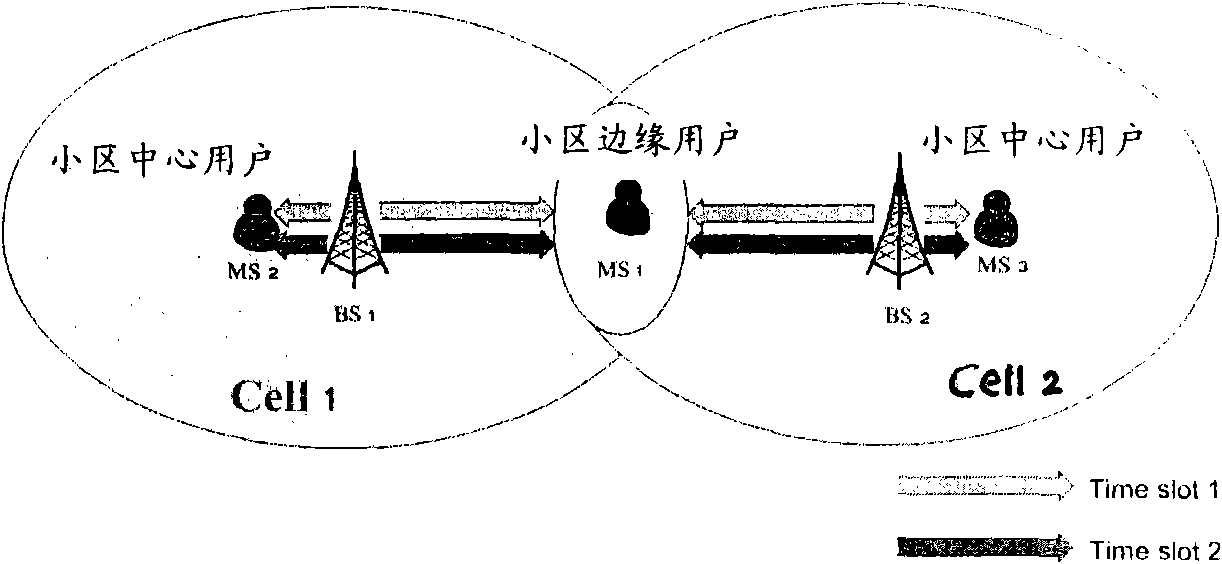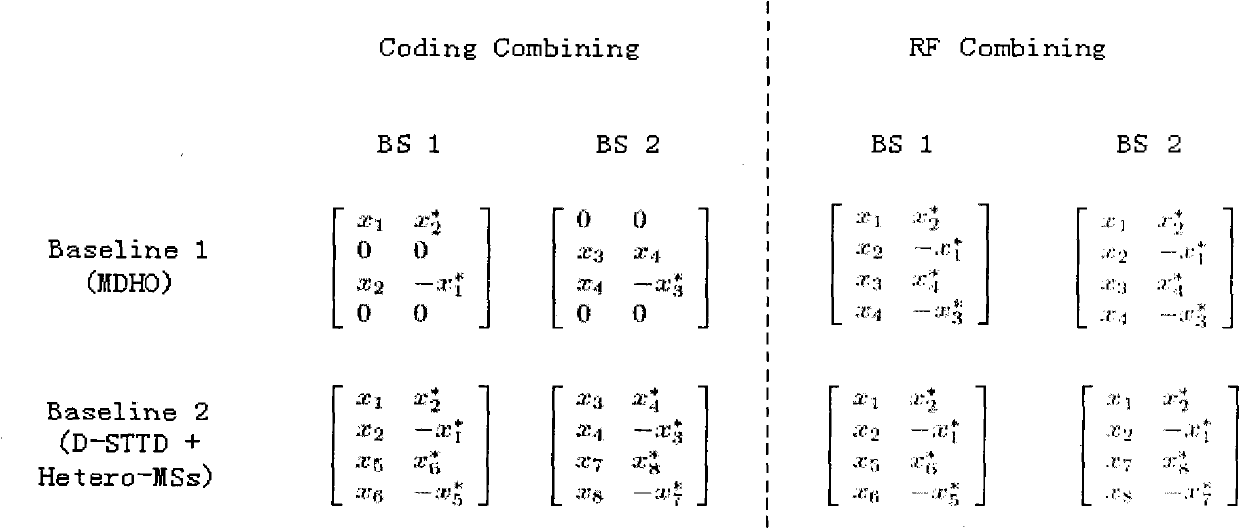Space division multiplexing-based encoding method, device and system in cooperative multiple input multiple output (MIMO) communication
A technology of space division multiplexing and encoding method, applied in the field of encoding method, device and system based on space division multiplexing, can solve the problems of wasting wireless resources, inter-user interference, unable to accurately decode signals, etc., to reduce the number of inter-user Effects of interference, avoiding waste, and taking into account interests
- Summary
- Abstract
- Description
- Claims
- Application Information
AI Technical Summary
Problems solved by technology
Method used
Image
Examples
example 1
[0089] This embodiment takes two BS cooperation as an example to introduce. In this example, the BS supports 4 antennas, and the MS supports 2 antennas; each MS moves at a high speed (without special CSI feedback); the application environment is still as follows figure 2 As shown, one MS (MS1) is located at the edge of the cell, which is the cell edge user, and two MSs (MS2 and MS3) are respectively located at the cell center, that is, MS2 is the cell center user of BS1, and MS3 is the cell center user of BS2. Assume that MS1 receives symbols x1, x2, x3, x4; MS2 receives symbol x5; MS3 receives symbol x6. Each BS transmits a D-STTD signal structure, one stream is used for cell-edge MSs, and one stream is used for both intra-cell users (Cell-center MSs) and cell-edge MSs.
[0090] Taking BS1 as an example, use one of the group (2) antennas of BS1 to exclusively serve the cell edge user MS1 of the cell where BS1 is located, and encode the first group of symbols x1 and x2 to be ...
example 2
[0122] In this example, three base stations cooperate to provide services for one cell edge user and three cell center users. Each base station has 4 antennas, users at the edge of the cell have more than 2 antennas, and users at the center of the cell have more than 2 antennas. Suppose cell edge user MS1 receives symbols x1, x2, x3, x4, x5, x6; other 3 cell center users MS2, MS3, MS4 receive symbols x7, x8, x9 respectively.
[0123] Each BS transmits a D-STTD signal structure, one flow is used for cell edge users (Cell-edge MSs), and one flow is used for cell center users (Cell-center MSs) and cell edge users (Cell-edge MSs), according to The encoding structure of each base station of the scheme of the present invention is as follows:
[0124] BS1 transfer structure BS2 Transport Structure
[0125] BS3 Transport Structure
[0126] For the users in the center of the cell, they treat the transmitted signals according to the traditional D-STTD structure, and perform the...
PUM
 Login to View More
Login to View More Abstract
Description
Claims
Application Information
 Login to View More
Login to View More - R&D
- Intellectual Property
- Life Sciences
- Materials
- Tech Scout
- Unparalleled Data Quality
- Higher Quality Content
- 60% Fewer Hallucinations
Browse by: Latest US Patents, China's latest patents, Technical Efficacy Thesaurus, Application Domain, Technology Topic, Popular Technical Reports.
© 2025 PatSnap. All rights reserved.Legal|Privacy policy|Modern Slavery Act Transparency Statement|Sitemap|About US| Contact US: help@patsnap.com



